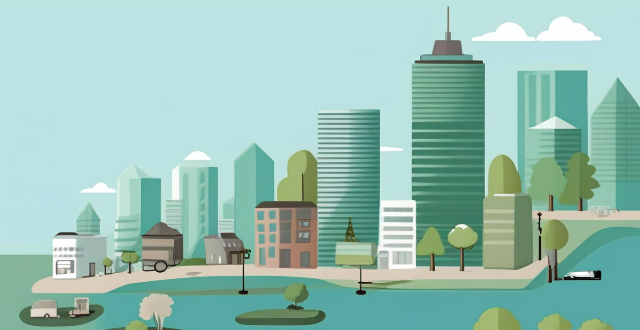The text discusses the importance of climate-smart technologies in urban planning. It outlines various ways these technologies can be integrated into urban planning, including sustainable transportation systems, green building design, urban heat island mitigation, energy efficiency and renewable energy, water management, and community engagement and education. The text emphasizes that adopting these strategies can make cities more resilient to climate change while improving the quality of life for their residents.

Implementing Climate-Smart Technologies in Urban Planning
Climate-smart technologies play a crucial role in urban planning, helping cities adapt to climate change, reduce their carbon footprint, and improve the quality of life for residents. Here are some ways these technologies can be integrated into urban planning:
1. Sustainable Transportation Systems
- Promote Public Transit: Encourage the use of public transportation by making it affordable, efficient, and accessible. This reduces the number of private vehicles on the road, leading to lower emissions.
- Bicycle Infrastructure: Develop dedicated bike lanes and promote cycling as a means of transportation. This not only reduces emissions but also promotes a healthier lifestyle for residents.
- Electric Vehicles: Encourage the adoption of electric vehicles by providing charging stations and offering incentives for their purchase. This helps reduce dependence on fossil fuels.
2. Green Building Design
- Energy Efficiency: Incorporate energy-efficient designs such as solar panels, green roofs, and natural ventilation systems in new buildings. This reduces energy consumption and greenhouse gas emissions.
- Water Conservation: Implement rainwater harvesting systems and water-efficient appliances to conserve water resources.
- Waste Management: Integrate waste management systems that promote recycling and composting, reducing the amount of waste sent to landfills.
3. Urban Heat Island Mitigation
- Green Spaces: Create parks, gardens, and other green spaces to provide shade and cool the surrounding area. This helps reduce the urban heat island effect, making cities more comfortable for residents.
- Reflective Surfaces: Use reflective materials on roofs and pavements to reflect sunlight and reduce heat absorption. This can help lower temperatures in urban areas.
4. Energy Efficiency and Renewable Energy
- Smart Grids: Implement smart grids to optimize energy distribution and reduce energy loss. This allows for better management of renewable energy sources like wind and solar power.
- Renewable Energy Sources: Encourage the use of renewable energy sources such as solar panels, wind turbines, and geothermal systems in urban areas. This reduces reliance on fossil fuels and decreases carbon emissions.
5. Water Management
- Rainwater Harvesting: Implement rainwater harvesting systems to collect and store rainwater for later use. This helps conserve water resources and reduces demand on local water supplies.
- Stormwater Management: Design stormwater management systems that prevent flooding and protect natural habitats. This includes constructing green roofs, permeable pavements, and rain gardens to absorb excess water.
6. Community Engagement and Education
- Public Awareness Campaigns: Organize campaigns to educate residents about climate change and its impact on their daily lives. This raises awareness about the importance of adopting climate-smart technologies in urban planning.
- Community Participation: Encourage community participation in decision-making processes related to urban planning and climate action initiatives. This ensures that the needs and concerns of residents are addressed in the implementation of climate-smart technologies.
In conclusion, implementing climate-smart technologies in urban planning requires a multifaceted approach that addresses various aspects of city life, from transportation and building design to energy efficiency and water management. By adopting these strategies, cities can become more resilient to climate change while improving the quality of life for their residents.